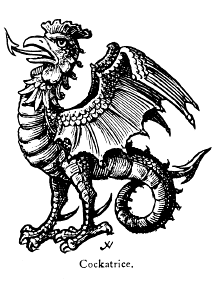So, for starters: The creature on the front cover of the book is a nak.
A nak is largely synonymous with a naga, and to some, this is a completely interchangeable term.
As I've pointed out before: a wyvern is no more a dragon than a cockatrice is synonymous with a basilisk, merely because they all have scales and seem strictly mythological.
I think the differentiation may be important, if not now, in the future.
We should be able to tell the difference between a lung, a ryu, a zaj, a yong, a rồng, a naga and a nak.
There are enough subtle differences in attributes and the connected tales we need not be in such a rush to lump things in broad categories. There is value in recognizing the distinguishing elements. But again, I've said this before.


As a point of trivia, this nak is from my family's wat near Modesto, California, so one can argue it's a particularly Laotian American nak.
This isn't essential to your reading of On The Other Side Of The Eye, but does provide a bit of fun trivia for the week.

In closing this entry, I'll share a personal adaptation of an excerpt from Jorge Luis Borges' entry on Nagas in the exceptional Book of Imaginary Beings (1967/1969) because it may interest particular readers of mine:
"King Asoka came to a lake near which there was a tower. He decided to destroy the tower in order to erect a taller one.A Brahmin led him into the tower, and once inside told the king: 'My human form is an illusion; I am really a naga. Because of my evil karma I have received this naga body; by religious service I desire to atone for and efface my guilt. You may destroy this sanctuary if you think yourself able to build another that surpasses this one.'He then showed King Asoka the vessels of the sanctuary. The king looked at them in alarm, for they were unlike anything seen amongst men, and he changed his mind and left the tower standing."
How this is relevant to a reading of On The Other Side Of The Eye is up to you. Perhaps it is not at all relevant. I find it an intriguing quote, just the same.

No comments:
Post a Comment